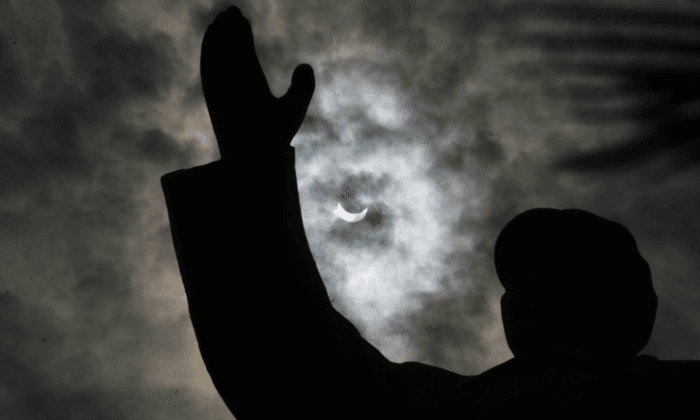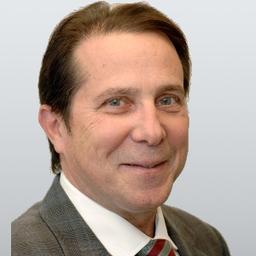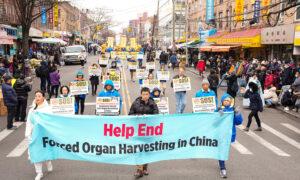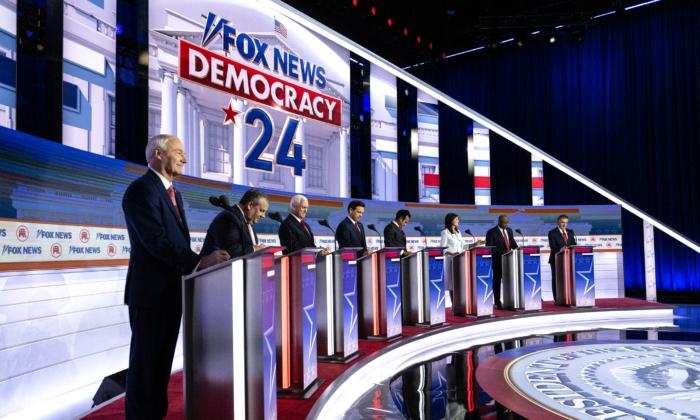In 2016, when Chinese leader Xi Jinping delivered a speech calling for the “Sinicization of religion” in a nation of one billion, he was espousing a century-old impulse among his people while also inadvertently underscoring a persistent paradox that Chinese Communists brought with them when they took over the country in 1949—and have never shaken.
The impulse is that the major faiths observed in China are not indigenous to the world’s oldest civilization. Buddhism was imported from India and Tibet. Islam arrived in overland trading routes and human migration from the Middle East, while Christianity, another Abrahamic faith, came across the ocean from Europe and America. To Communist leaders, and many Han Chinese civilians, these traditions represent potentially destabilizing foreign influence.
The paradox, of course, is that Marxism was also a foreign import, one imposed on Chinese society—in Mao Zedong’s own words—from “the barrel of a gun.” It not only destabilized China’s existing social structures and spiritual traditions, but as Marxist-Leninism morphed into Maoism, also became a kind of national religion itself—with Mao Zedong in the role of savior.
This was not an accident. “Worshiping Marx, Engels, Lenin, and Stalin is correct,” Mao said at a 1958 party conference, “because truth is in their hands.” In 1970, the “Great Helmsman” told Edgar Snow, an American journalist and Mao apologist, that the cult of personality was necessary strategy to “overcome the habits of 3,000 years of emperor-worshipping tradition.”
But the ascendant faith in China when Mao and his troops embarked on “The Long March” that would put them in power wasn’t found in China’s ancient temples. It came from the Christian Bible, which was embraced by the western-educated modernists who’d helped overthrow the Qing dynasty in the early years of the 20th century.
When he came to power in 1912, the Hawaiian-educated, English-speaking Sun Yat-sen went to a village in Guangdong Province and smashed the statues in the local temple. Kuomintang Party leader Chiang Kai-shek went further, actually converting to Christianity. This wasn’t always popular. Among some Han people—the vast majority of Chinese—a folk saying emerged in response to such conversions: “One more Christian, one less Chinese.”
This, then, is the historic precedent for Xi’s call for “Sinicization” of religious observance. It’s an appeal, albeit a cynical one, to his people’s shared national—and ethnic—identity. “It is necessary,” Xi explained in a December 2021 Beijing conference on religion, “to improve the democratic supervision of religious leaders, and push for the rule of law in religious work.”
Leaving aside the Orwellian use of the word “democratic,” Xi’s statement reveals its true motivation: Tighter government control over the citizenry. And though “supervision” is an anodyne word, the practice of this policy of “supervision” has translated into strict control over the Catholic church in China, stepped-up repression against Chinese Protestants, a continuation of the regime’s harsh treatment of Tibetan Buddhists, and cruel suppression of both Uyghur Muslims and followers of Falun Gong.
Land of a Million Temples
At the dawn of the 20th century, the world’s oldest civilization was probably its most spiritual. It wasn’t a land of denominational faiths with strict liturgical delineations, as is the case with Christians, Jews, and Muslims. In China, three great traditions were intertwined in ways that defied sectarian definitions: Buddhism, brought from India before the birth of Christ, was interlaced with the rituals of two homegrown Chinese traditions, Taoism and Confucianism. Doctrinal differences were so unimportant as to be little-discussed. Theological texts, even clergy, were rare. What was common was ritual and behavior.“Chinese philosophers,” in the description of historian David Johnson, “were more concerned with how people should act, and what counted as good actions than with using logic to prove propositions.”
In such a society, notions of a separation of church and state didn’t compute. They were one and the same. Ian Johnson, author of the 2017 masterpiece “The Souls of China: The Return of Religion After Mao,” notes that religion was at the center of Han society. “But religion was more than a method for running China; it was the political system’s lifeblood,” Johnson wrote. “The emperor was the ‘Son of Heaven,’ who presided over elaborate rituals that underscored his semi-divine nature.”
Beijing, a city of fewer than 800,000 people, had 1,000 temples, according to the research of Princeton historian Susan Naquin. She estimates that in 1911, the year before Sun Yat-sen came to power, China had some 1 million temples, some huge and glorious, some in people’s backyards. Most of them are gone now, victims of the two modernizing movements: the 10-year purge by Chiang Kai-shek’s Kuomintang Party and the succeeding reign of its Communist successors.
Both regimes made it clear that they believed China’s homegrown faith traditions were responsible for making the country weak and leaving it vulnerable to conquest from much smaller nations, most notably Japan and Great Britain. The Kuomintang, long ago consigned to Taiwan, favored western religions, while Mao and his followers were committed atheists. From the beginning, Mao’s intent was to marry Marxism to Han nationalism. Religion had to go, especially if it originated outside China, which is where Mao differed from Sun Yat-sen and Chiang Kai-shek.
This is the historic example Xi is imitating when he inveighs against religious freedom. “We must resolutely guard against overseas infiltrations via religious means,” Xi proclaimed in an April 2016 speech. Mao never bothered to try and rationalize the obvious irony here, which is that Communism came from Germany and Russia, not China. Neither has Xi.
In any event, after 1949, the imperatives of state-imposed atheism necessitated the closings of churches, mosques, and temples. Religious symbols were destroyed, Catholic priests and nuns were forced to renounce celibacy and marry. Thousands of clergy and other religious officials were sent to re-education camps. Some 6,000 monasteries were burned in Tibet alone, and thousands of Buddhist monks and nuns were arrested and killed. This campaign of terror was supercharged in 1966 with the onset of the Cultural Revolution. Mere possession of religious texts was criminalized, and anyone keeping copies could be arrested and executed, which is what happened to many Catholic priests and bishops.
As a replacement, the Chinese people were forced to read and recite a new Bible, officially known as “Quotations of Chairman Mao Zedong,” but unofficially as “The Little Red Book.” Some 800 million editions were printed, suggesting that every adult in the country had a copy. Included were hoary revolutionary phrases (“Every communist must grasp the truth, ‘Political power grows out of the barrel of a gun,’” while others were messianic, “If you confess your sins Mao [the Party] is faithful and just in forgiving your sins.”)
The Cultural Revolution ended upon Mao’s death. The Chinese people experienced feelings of collective relief, but felt disoriented nonetheless. “There was one problem with Mao as a living god: he died,” wrote Ian Johnson. “When that happened in 1976, the country went into shock …. With traditional religion dead, where could one channel one’s faith?”
It took the moderating policies of President Deng Xiaoping, who imprisoned Mao’s widow and the rest of the Cultural Revolution’s “Gang of Four,” to get the Chinese people on solid footing once again. One way Deng accomplished this was to relax the prohibitions against people of faith and organized religion. It helped the Chinese regain their equilibrium.
First, They Came for Falun Gong
In the 1980s, Deng’s economic and political reforms, which mirrored similar easing of control in the Soviet Union, led to more openness to the West. The period also marked broader state tolerance of religious practices, albeit ones operating within a prescribed party framework. Official churches, temples, and mosques were allowed to exist, but presumably only if they operated under rules imposed by the Chinese Communist Party (CCP).After the Tiananmen Square massacre in 1989—when soldiers and tanks took to the streets to quash student demonstrations, killing at least hundreds and possibly thousands of pro-democracy protestors—the CCP kept most of Deng’s economic reforms but reasserted the government’s control over freedom of expression and political activity. Among those specifically targeted for repression were Tibetan Buddhists and, by 1997, Falun Gong. On the 10th anniversary of the Tiananmen Square protests, Falun Gong supporters protested in Beijing.
This would spell doom for the new movement.
In 1999, CCP general-secretary Jiang Zemin created an extralegal department to target members of Falun Gong. On July 20 that year, CCP security forces arrested thousands of Falun Gong organizers and began a campaign of violent persecution and arbitrary detention that has continued ever since.
Recent headlines around the world have focused mainly on the more than 1 million Uyghur Muslims forced into labor camps, which Beijing cynically calls “vocational training centers.”
In Hong Kong, local authorities, following orders from Beijing, last year arrested and prosecuted Cardinal Joseph Zen, a widely revered bishop emeritus. Zen and other prominent Catholic and Protestant leaders supported the 2019 uprising in which millions of Hong Kong residents took to the streets to oppose a proposed extradition law allowing Chinese leaders to arrest dissidents and hand them over to the mainland government for prosecution.
Over the last several years, the United States and other international bodies have shown more willingness to confront China’s war on religion. Xi’s large-scale persecution of the Uyghur Muslims has gained worldwide acceptance and widespread condemnation. A watershed moment came in 2021 when both the Trump and Biden administrations officially labeled what the CCP is doing to Uyghurs in Xinjiang as “genocide.”
Declaring Falun Gong to be an “evil cult” that preached heretical mind-controlling fallacies, the regime went to extreme lengths to suppress the spiritual discipline. The measures they have employed are almost too gruesome to contemplate.




